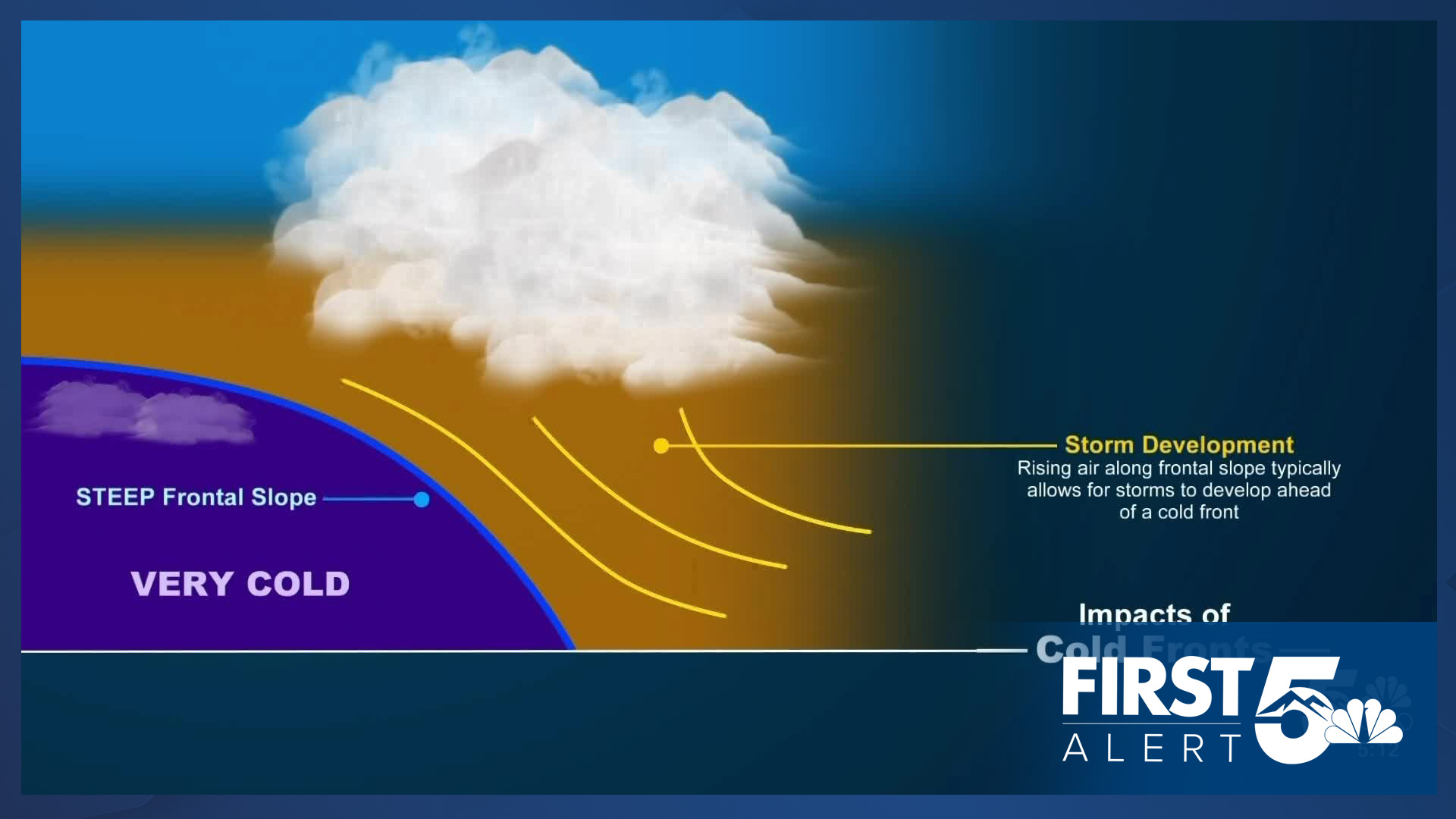THE CLIMATE CLASSROOM: COLD FRONTS
Cold fronts.
Southern Colorado gets them quite often in fall and winter -
You probably already know what they bring.
Colder air - of course - and often wind, rain, and snow.
But why?
Here's how you can simulate a cold front yourself - so you can see how cold fronts work.
MATERIALS
Okay, let's talk set up.
You'll need:
| Cold Water |
| Hot Water |
| Two bowls (one each for the cold and hot water) |
| Food dye: red and blue |
| A large glass dish or clear plastic container |
| A plastic or metal divider that is waterproof, and fits cleanly in your dish or divider (this may require some DIY depending on the container you use) |
EXPERIMENT
To do the experiment, first get hot water (hotter is better here), and cold water (same thing - colder is better), and add red food dye to the hot water and blue food dye to the cold water.
Allow the food dye to disperse through the water. You don't need a huge amount of food dye, but enough to clearly and easily see the color throughout the water.
Then, put your divider into the container. This may be the area that proves most challenging - it was for me. If you have a storage divider that separates a container cleanly into two sides, that can work. For my version of the experiment, I used cardboard - and traced out the dimensions of my container on it using a marker. Then, I cut the cardboard to the exact size and shape needed to fit cleanly in the container. From there, I painted on a coat of a material that hardens into a flexible rubber-like surface, and then reinforced it with an epoxy resin to create extra strength so the final product would not bend from the force of the water. This took about a day to fully dry, to factor that into your planning if you follow these exact steps. Of course, there are many other ways to create this removable barrier.
Once you get everything set up, if you've got a flashlight, put it behind the container to make the experiment easier to actually see. It happens fairly quickly, so it's useful to have a camera too.
Make sure the divider is firmly in place with no gaps at the bottom or sides, or the water will immediately mix and the experiment won't work. Pour the hot water into one side at the same time you pour the cold water into the other side.
You can think of the blue water as "cold air" and the warm water as "hot air". The atmosphere behaves as a fluid (why - is a story for another time - but, it does), so you're simulating the same thing the atmosphere does.
WHAT HAPPENS:
When you remove the divider, you should see the cold air push forward and a slope to form between the cold and warm water as they begin to mix. The cold water dives down, sloping back, while the warm water will slope up. As the water interacts, the hot water will eventually lie above the cold water as the water begins to mix. Cold air is more dense than warm air, so it sinks. The slope you see transiently as you remove the divider is how cold fronts (and warm fronts) are shaped.
Eventually, the water mixes and you won't be able to see the different colors anymore.
During the time before the water mixes, you'll notice the fronts are basically inverse images of each other. Cold air "leads" a cold front, which is steeply sloped. The bottom of the front arrives first, then the middle, then the top. Warm fronts are the reverse. The top arrives first, then the middle, then the bottom. Practically speaking this is why cold fronts produce more intense weather changes than warm fronts. They're steeply sloped, like a snowplow, and air gets flung upwards quickly as they cross a given area which often produces storms.
Wind occurs due to changes in air pressure - which occur due to changes in density. Cold air is dense. Warm air is less dense, and cold fronts result in strong winds as the denser air pushes into and replaces the less dense air. Wind is largely the atmosphere trying to restore balance between air masses with differing densities.
____
Have a question or story idea you would like the First Alert 5 Weather team to consider? Email: weather@koaa.com
Watch KOAA News5 on your time, anytime with our free streaming app available for your Roku, FireTV, AppleTV and Android TV. Just search KOAA News5, download and start watching.




